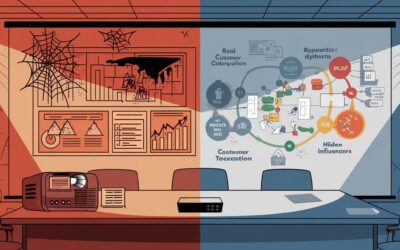Your operations are on track. Your manufacturing lines are humming. Yet, customers are frustrated, orders are missed, and sales teams are firefighting.
The Paradox:
“Our factory is operating at 95% efficiency. Why are customers still complaining?”
This is the paradox many organizations live with: – operational success inside, customer frustration outside.
The disconnect? OTIF
✅ What is OTIF, really?
OTIF measures whether a customer gets exactly what they ordered,in the quantity they expected,at the time they expected. It’s the final handshake — where all your planning, production, warehousing, and logistics either come together or collapse.
Yet, OTIF is often misunderstood or oversimplified. For example:
‘On Time’ is not “as per dispatch date, but ‘as per customer need date’
‘In Full’ doesn’t mean what’s available in stock — it means what the order committed to deliver.
Internal metrics like “plant capacity utilization” or “inventory turnover” don’t always translate to external service success.
🛠️ Why your plant can be running — but your market still cries:
1. Mismatch between planning and demand
* Forecasts are top-down. Orders are bottom-up. If they don’t talk, you’re just playing supply chain whack-a-mole.
2. Production-driven mindset
* Plants run full-batch for efficiency. Markets need responsiveness. The two often clash unless cross-functional alignment exists.
3. Siloed Working & KPIs
* Manufacturing celebrates output. Logistics celebrates dispatch. Sales celebrates billing. But no one owns delivery experience.
4. Inventory in the wrong place
* You might have stock — just not where the customer needs it. Geography matters as much as availability.
5. Poor master data & systems hygiene
* OTIF depends on accuracy — of lead times, routing, MOQ, pack sizes. Garbage in, failure out.
🎯 How to Fix It — Sustainably
1. Redesign OTIF as a shared metric across functions: planning, production, supply chain, and sales. Make it a team sport.
2. Segment customers and service expectations — not all orders need the same rigor. Design differentiated fulfillment strategies.
3. Use root cause analysis on every miss, not just high-level dashboards. Is it a product issue? Plant? Planning? Transport? Label it.
4. Tie OTIF to incentive structures, not just presentations. What gets rewarded gets managed.
5. Build a digital command center — real-time visibility of forecast vs. order vs. delivery. Data should not be a post-mortem report.
🧠 Final Thought:
OTIF is not just a supply chain metric — it’s a mirror to your organizational maturity.
When your market cries despite internal performance, it’s not a logistics issue.
It’s a “strategy-execution alignment issue.”
And in today’s volatile, omni-channel, customer-first world, your real differentiator isn’t production speed — it’s delivery precision.
B2B Customer Journey Mapping: Insightful Challenges Solved
B2B Customer Journey Mapping: Insightful Challenges Solved Introduction: The Expensive Illusion of Knowing Your B2B Customer Let's cut through the noise: most B2B customer journey maps are expensive PowerPoint decks gathering digital dust. Companies invest lakhs in...






